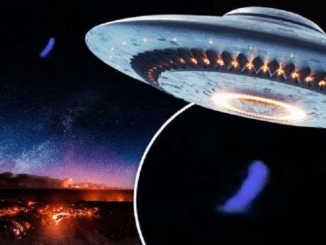In a stunning revelation, astronomers have identified a galaxy that appears to contain no stars—an astonishing find that challenges our understanding of galaxy formation and structure. This unusual object, designated J0613+52, is located a remarkable 270 million light-years away from Earth. Described as eerily empty, this galaxy has left scientists puzzled and eager to delve deeper into its secrets.

The discovery was made by accident when the Green Bank Observatory team was conducting routine observations of ultra-diffuse galaxies—galaxies known for their low surface brightness and sparse structure. Karen O’Neil, a senior scientist at the observatory, explained that the team’s goal was to measure the gas and dynamic masses of these galaxies. However, during one of their observations, the Green Bank Telescope was mistakenly pointed in the wrong direction. This led to the identification of J0613+52, a galaxy unlike anything seen before.
What sets J0613+52 apart from other galaxies is its complete lack of visible stars. Unlike typical galaxies that are teeming with stars, nebulae, and stellar clusters, J0613+52 appears to be made solely of gas, devoid of the luminous bodies that make up the stars we are accustomed to seeing. The absence of stars raises significant questions about the processes that govern galaxy formation, particularly in terms of star creation and the role gas plays in the evolution of galaxies.
To put it into perspective, astronomers classify J0613+52 as a type of low-surface brightness galaxy (LSB). These galaxies are inherently dimmer than others because their gas is spread out over a much larger area, which results in fewer stars being formed. LSB galaxies are difficult to detect with traditional observational methods, but they are thought to be more common than previously realized. J0613+52, however, stands out even among LSBs due to the sheer lack of star formation activity in the galaxy.

This discovery opens up a new frontier for astronomers. The galaxy’s composition, being primarily gas without any visible stars, could provide valuable insight into the processes that occur in the early stages of galaxy formation. There is a possibility that J0613+52 could be an early-stage galaxy or one that has somehow stalled in its star-formation process. Alternatively, it may offer clues to understanding galaxies that have evolved differently from the ones we know.
Experts believe that a deeper exploration of J0613+52, using advanced imaging techniques across multiple optical bands, could help uncover more about the strange forces at play in this galaxy. The detailed observations might reveal why this galaxy is so unlike any others, whether it’s the result of unique environmental factors, or if it represents an entirely new type of galaxy altogether.

Despite its dim and almost featureless appearance, J0613+52 holds immense potential for astronomical research. As scientists continue to study this unusual object, it could lead to groundbreaking discoveries about the complexities of galactic evolution and the mysterious role of gas in the formation of galaxies throughout the universe. With every new discovery, we are reminded that the universe is full of surprises, and J0613+52 is just one of many mysteries that await further exploration.


